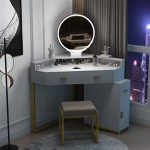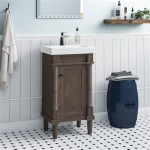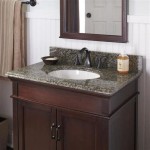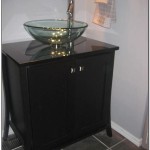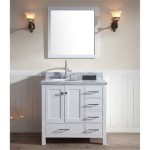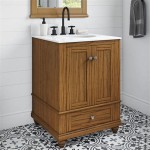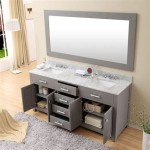Photos of Bathroom Vanity Lighting: A Comprehensive Guide
Bathroom vanity lighting plays a crucial role in both the functionality and aesthetics of a bathroom space. Effective lighting enhances tasks such as grooming, applying makeup, and shaving, while also contributing to the overall ambiance and style of the room. Numerous styles, configurations, and technologies are available, making it imperative to understand the key considerations when selecting the appropriate vanity lighting. Photographic examples serve as valuable resources, showcasing various approaches and helping homeowners and designers visualize potential options for their own bathrooms.
The importance of proper bathroom vanity lighting cannot be overstated. Insufficient lighting can lead to strained vision and difficulties in performing everyday activities. Poor lighting can also distort colors, especially when applying makeup, resulting in an unnatural or uneven appearance. Conversely, overly harsh lighting can create an uncomfortable glare and detract from the relaxing atmosphere often desired in a bathroom setting. Balancing brightness, color temperature, and fixture placement is essential to achieve optimal results.
This article will explore various aspects of bathroom vanity lighting, examining different fixture types, placement strategies, color temperature considerations, and style options. Photographic examples will be used to illustrate each concept, providing a visual guide to selecting the most suitable lighting solution for a given bathroom design.
Understanding Different Types of Bathroom Vanity Lighting
Several distinct types of lighting fixtures are commonly used in bathroom vanities, each offering unique advantages and disadvantages. The selection of the appropriate fixture type should be based on the size and layout of the bathroom, the desired level of illumination, and the overall design aesthetic.
Light Bars: Light bars, often mounted horizontally above the mirror, provide a broad, even light source. This type of fixture is particularly effective for illuminating the face, minimizing shadows and ensuring accurate color rendering. Light bars are available in a variety of lengths and styles, ranging from sleek and modern designs to more traditional and ornate options. They are typically equipped with multiple light bulbs or integrated LED arrays, offering ample illumination for tasks such as shaving and makeup application. Some light bars feature adjustable brightness settings, allowing users to customize the light output to their preferences.
Sconces: Sconces are wall-mounted fixtures that flank the mirror, typically positioned at eye level. This placement helps to minimize shadows and provide balanced illumination across the face. Sconces are available in a wide array of styles, from minimalist and contemporary designs to more elaborate and decorative options. They can be wired directly into the wall or plugged into an outlet, offering flexibility in installation. When selecting sconces, it is important to consider the size of the mirror and the overall scale of the vanity. Overly large sconces can overwhelm a small vanity, while undersized sconces may not provide adequate illumination.
Pendant Lights: Pendant lights, suspended from the ceiling, can add a touch of elegance and sophistication to a bathroom vanity. They are often used in conjunction with other lighting fixtures, such as recessed lights or sconces, to provide layered illumination. Pendant lights are available in a wide range of styles and sizes, from simple and understated designs to more elaborate and dramatic options. When using pendant lights above a vanity, it is important to ensure that they are positioned at a comfortable height, avoiding any obstructions or glare. The height of the ceiling and the overall size of the bathroom should be taken into consideration when determining the optimal pendant light placement.
Recessed Lights: Recessed lights, installed flush with the ceiling, offer a discreet and versatile lighting solution. They can be used to provide ambient lighting throughout the bathroom or to highlight specific areas, such as the vanity. Recessed lights are available in a variety of sizes and styles, including adjustable models that allow users to direct the light beam. When using recessed lights to illuminate a vanity, it is important to position them strategically to avoid casting shadows on the face. Multiple recessed lights, spaced evenly across the ceiling, can provide a consistent and balanced level of illumination.
Strategic Placement for Optimal Illumination
The placement of bathroom vanity lighting is as crucial as the choice of fixture. Incorrect placement can negate the benefits of even the highest-quality lighting fixtures, resulting in shadows, glare, and inadequate illumination. Careful consideration must be given to the height, spacing, and angle of the lights to achieve optimal results.
Height and Spacing Considerations: For sconces, the ideal height is typically around 60 to 66 inches above the floor, placing them at eye level for most adults. The distance between sconces should be roughly 24 to 36 inches, ensuring even illumination across the face. Light bars are typically mounted directly above the mirror, with the length of the bar corresponding to the width of the mirror. Pendant lights should be hung at a height that avoids obstructing the view in the mirror or creating a hazard. Generally, a clearance of at least 72 inches between the floor and the bottom of the pendant light is recommended.
Minimizing Shadows and Glare: To minimize shadows, it is important to use multiple light sources positioned on either side of the mirror. This helps to provide balanced illumination and reduce the appearance of dark circles or wrinkles. Avoid placing a single light source directly above the mirror, as this can cast harsh shadows on the face. Glare can be minimized by using frosted or diffused bulbs and by directing the light away from reflective surfaces, such as mirrors and countertops. Dimmers can also be used to control the brightness of the lights, allowing users to adjust the illumination to their preferences.
Layered Lighting Approach: A layered lighting approach involves combining different types of lighting fixtures to create a well-balanced and functional lighting scheme. In addition to vanity lighting, consider incorporating ambient lighting, such as recessed lights or a ceiling fixture, to provide overall illumination for the bathroom. Accent lighting, such as spotlights or track lighting, can be used to highlight architectural features or artwork. By layering different types of lighting, it is possible to create a more dynamic and visually appealing bathroom space.
Color Temperature and Lighting Ambiance
Color temperature, measured in Kelvin (K), refers to the warmth or coolness of the light emitted by a light bulb or fixture. Different color temperatures can create different moods and affect the way colors are perceived. Selecting the appropriate color temperature for bathroom vanity lighting is essential for achieving the desired ambiance and ensuring accurate color rendering.
Warm vs. Cool Light: Warm light, with a color temperature of around 2700K to 3000K, produces a soft, yellowish glow that is often associated with relaxation and comfort. Cool light, with a color temperature of around 4000K to 5000K, produces a crisp, bluish-white light that is often associated with alertness and focus. In general, warm light is preferred for creating a relaxing and inviting bathroom environment, while cool light is better suited for tasks that require precision and attention to detail.
Ideal Color Temperature for Vanity Lighting: For bathroom vanity lighting, a color temperature of around 3000K to 3500K is generally recommended. This provides a balanced level of illumination that is both flattering and functional. Avoid using bulbs with excessively warm or cool color temperatures, as these can distort colors and create an unnatural appearance. When selecting light bulbs, look for those with a high Color Rendering Index (CRI), which indicates how accurately the bulb renders colors. A CRI of 80 or higher is generally recommended for bathroom vanity lighting.
Adjustable Color Temperature Options: Some lighting fixtures offer adjustable color temperature settings, allowing users to customize the light output to their preferences. This can be particularly useful in bathrooms that are used for a variety of purposes, such as grooming, relaxation, and bathing. Adjustable color temperature fixtures can be set to a warm, relaxing light for evening use and a cool, energizing light for morning use. This level of customization can enhance the overall functionality and versatility of the bathroom space.

Best Bathroom Vanity Lighting Lightology

Urban Ambiance Luxury Vintage Bathroom Vanity Light 8 375 H X 23 W Olde Bronze Finish Uhp2723

A Guide To Minimalist Bathroom Vanity Lighting

Aiwen 23 7 In 3 Light Modern Brushed Nickel Bathroom Vanity Wall Lamp Over Mirror With Glass Shade Whh V020 The Home

Rustproof Bathroom Vanity Light Fixtures Over Mirror 4 Wall Sconces Lighting With Modern Crystal Glass Shades24w Vintage For

Uolfin Modern Globe Bathroom Vanity Light 2 Brass Gold Round Powder Room Wall Sconce With Clear Glass Shades G72imihd23935nf

Rustic Wood Vanity Light

3 Lights Farmhouse Vanity Fixture Rustic Bathroom Light Sconce

Moose Vintage Mason Jar Bathroom Vanity Lighting 4 Lights

Letsun 24 Inch Dimmable Bathroom Vanity Light Fixtures 16w Led
